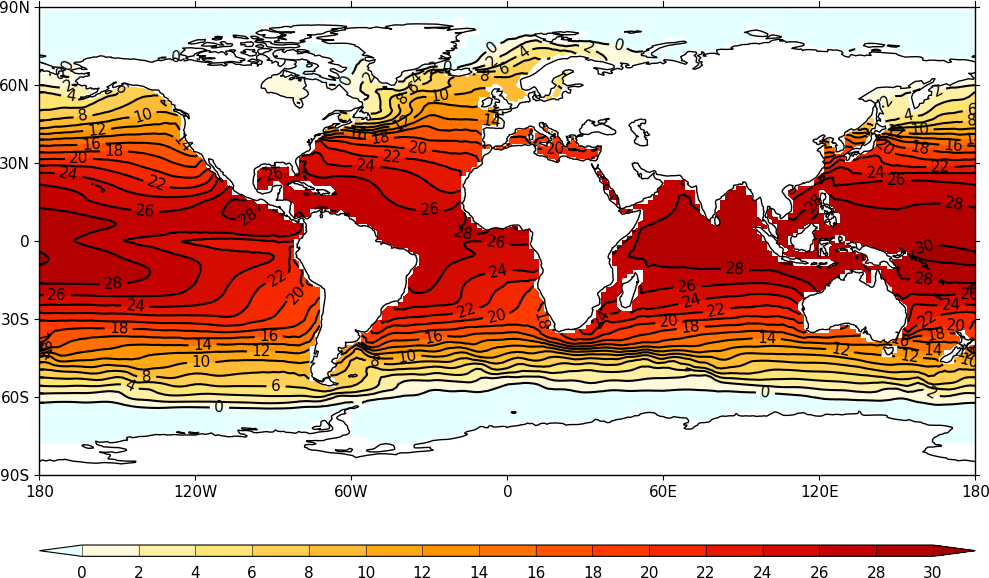cf python package¶
Introduction¶
Version 3.0.3 for version 1.7 of the CF conventions.
The Python cf package is an Earth science data analysis library that is built on a complete implementation of the CF data model.
Functionality¶
Note
This version of cf is for Python 3 only and there are incompatible differences between versions 2.x and 3.x of cf.
Scripts written for version 2.x but running under version 3.x should either work as expected, or provide informative error messages on the new API usage. However, it is advised that the outputs of older scripts be checked when running with Python 3 versions of the cf library.
For version 2.x documentation, see the older releases page.
The cf package implements the CF data model [1] for its internal data structures and so is able to process any CF-compliant dataset. It is not strict about CF-compliance, however, so that partially conformant datasets may be ingested from existing datasets and written to new datasets.This is so that datasets which are partially conformant may nonetheless be modified in memory.
>>> import cf
>>> f = cf.read('file.nc')
>>> print(f)
Field: air_temperature (ncvar%tas)
----------------------------------
Data : air_temperature(time(12), latitude(64), longitude(128)) K
Cell methods : time(12): mean (interval: 1.0 month)
Dimension coords: time(12) = [0450-11-16 00:00:00, ..., 0451-10-16 12:00:00] noleap
: latitude(64) = [-87.86380004882812, ..., 87.86380004882812] degrees_north
: longitude(128) = [0.0, ..., 357.1875] degrees_east
: height(1) = [2.0] m
The cf package can:
- read field constructs from netCDF, PP and UM datasets,
- create new field constructs in memory,
- inspect field constructs,
- test whether two field constructs are the same,
- modify field construct metadata and data,
- create subspaces of field constructs,
- write field constructs to netCDF datasets on disk,
- incorporate, and create, metadata stored in external files,
- read, write, and create data that have been compressed by convention (i.e. ragged or gathered arrays), whilst presenting a view of the data in its uncompressed form,
- Combine field constructs arithmetically,
- Manipulate field construct data by arithmetical and trigonometrical operations,
- Perform statistical collapses on field constructs,
- Regrid field constructs,
- Apply convolution filters to field constructs,
- Calculate derivatives of field constructs,
- Create field constructs to create derived quantities (such as vorticity).
Visualization¶
Powerful, flexible, and very simple to produce visualizations of field constructs are available with the cf-plot package, that needs to be installed separately to cf.
See the cf-plot gallery for the wide range range plotting possibilities with example code.

Example output of cf-plot displaying a cf field construct.
| [1] | Hassell, D., Gregory, J., Blower, J., Lawrence, B. N., and Taylor, K. E.: A data model of the Climate and Forecast metadata conventions (CF-1.6) with a software implementation (cf-python v2.1), Geosci. Model Dev., 10, 4619-4646, https://doi.org/10.5194/gmd-10-4619-2017, 2017. |